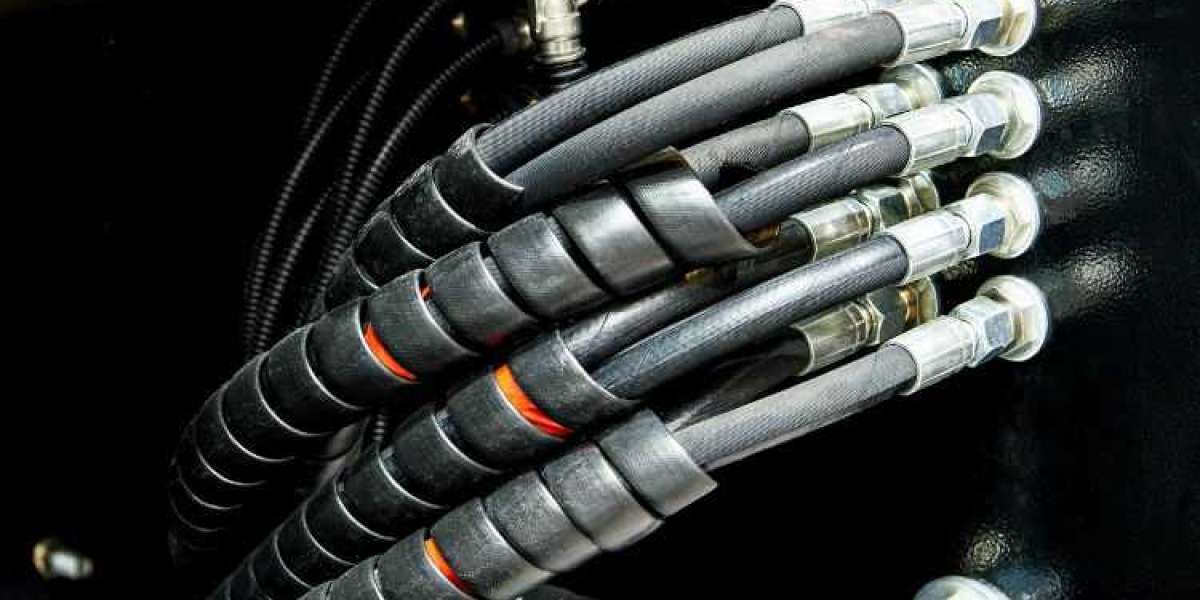The significance of hydraulic hoses in various industrial applications cannot be overstated. With the global hydraulic hose market size reaching an estimated USD 2.25 billion in 2023 and expected to grow at a CAGR of 4.4% to hit around USD 3.31 billion by 2032, the demand for these crucial components is more apparent than ever. This growth not only highlights the critical role of hydraulic hoses in myriad applications but also underscores the importance of selecting the right hose to ensure optimal system performance. This article aims to guide readers through the essential considerations for choosing a hydraulic hose that meets their system's requirements.
Understanding Hydraulic Hose Basics
At the core of hydraulic systems is the hydraulic hose, designed to transmit fluid power with efficiency and safety. These hoses comprise three key layers: an inner tube that conveys the fluid, a reinforcement layer that provides strength and flexibility, and an outer cover that protects against environmental damage. Knowing the basics, including hose sizing and specifications, is crucial for making an informed selection.
Operating Conditions and Environmental Factors
Choosing the correct hydraulic hose requires a thorough understanding of the operating environment. Temperature, pressure, fluid compatibility, and external factors like abrasion, chemicals, UV exposure, and ozone resistance significantly influence hose performance and longevity. A hose that matches these conditions ensures the reliability and safety of the hydraulic system.
Hydraulic System Requirements
System specifications such as pressure ratings, flow rates, and fluid compatibility are paramount. The hose must be compatible with these requirements to prevent damage or failure. Additionally, considerations like flexibility, bend radius, and hose length affect the system's efficiency and must be carefully evaluated during the selection process.
Material Selection
Hydraulic hoses are made from materials including rubber, thermoplastic, and metal, each offering distinct advantages. Rubber hoses are valued for their flexibility and broad fluid compatibility, thermoplastic hoses for their chemical resistance and light weight, and metal hoses for their high resistance to temperature and pressure. The choice of material should be based on application demands and environmental factors.
Reinforcement Options
The hose's reinforcement type influences its strength, flexibility, and pressure resistance. Options include textile fibers, wire braid, and spiral-wound steel, each suited to different applications based on pressure requirements and desired flexibility. The application's specific demands guide the selection of the appropriate reinforcement type.
Hose End Fittings and Connections
The performance and reliability of the hydraulic system also depend on the correct choice of hose end fittings and connections. From crimped and reusable to push-on fittings, the selection must ensure a leak-free connection compatible with the system's components. The fitting type, along with the connection method (e.g., JIC, NPT, BSP), is crucial for system integrity.
Quality and Compliance
Opting for hydraulic hoses from reputable manufacturers ensures system reliability. Adherence to standards and certifications like SAE, ISO, and DIN signals that hoses meet high-quality and performance benchmarks. Compliance with specific industry regulations and certifications further guarantees the hose's suitability for particular applications.
Cost and Value Considerations
While the initial purchase price is an important factor, the total cost of ownership—which includes maintenance and replacement costs—should not be overlooked. High-quality hoses may come at a higher upfront cost but can offer savings in the long term by minimizing downtime, maintenance, and repair expenses. Balancing cost against performance and reliability is key to maximizing value.
In-Depth Analysis of Operating Conditions and Environmental Factors
Understanding the specific operating conditions and environmental factors is paramount. For instance, temperature extremes, both high and low, can significantly impact the material integrity and performance of a hydraulic hose. High temperatures can lead to softening and degradation of the hose material, while low temperatures may cause brittleness and cracking. Therefore, selecting a hose material and construction that can withstand the operating temperature range is crucial.
Fluid compatibility extends beyond just the type of hydraulic fluid used; it also encompasses the potential for fluid contamination and the presence of water or other chemicals that could come into contact with the hose. Chemical resistance charts provided by manufacturers can guide the selection process to ensure compatibility and prevent hose degradation.
System Requirements: Beyond the Basics
When matching hose specifications to system requirements, it's essential to consider not only the static conditions but also dynamic factors. For instance, peak pressure surges often exceed the system's nominal pressure and can cause hose failure if not properly accounted for. Thus, selecting a hose with a burst pressure rating significantly higher than the system's maximum pressure is wise.
The flow rate within the hose also influences selection, as it affects the velocity of the fluid. High fluid velocity can lead to increased friction and heat generation, potentially causing damage. Adhering to recommended velocity guidelines for different hose sizes can prevent such issues.
Material and Reinforcement: A Closer Look
Each material offers unique benefits and limitations. Thermoplastic hoses, for example, are known for their light weight and good chemical resistance but may not provide the same level of durability and high-temperature resistance as rubber hoses. Metal hoses, while offering high resistance to temperature and pressures, lack the flexibility of their rubber and thermoplastic counterparts, making them less suitable for applications requiring frequent bending or movement.
The reinforcement layer plays a crucial role in a hose's pressure capacity and flexibility. Spiral-wound reinforcements are typically used in high-pressure applications due to their superior strength and impulse resistance. In contrast, braided reinforcements offer better flexibility, making them ideal for applications requiring hose movement or tight bend radii.













